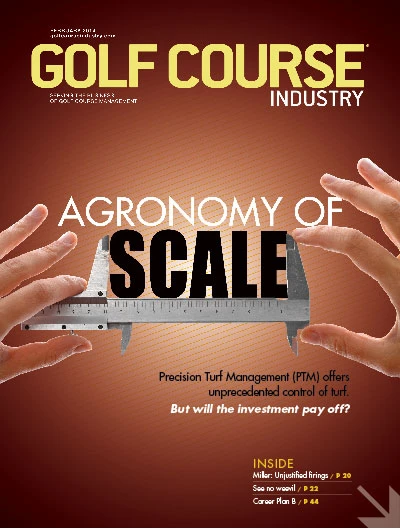 Tim Moraghan Tim Moraghan |
Whether dealing with a last-minute problem or a long-term situation, resist the urge to act until you’ve taken the most important step – giving it some thought. Graduates of Penn State may recall that Dr. Joe Duich, long-time professor of turfgrass science at Penn State University who, during his academic career taught almost 6,000 graduate, undergraduate, and two-year turfgrass students, would often begin a lecture by writing a single word on the blackboard: “Think.” You might find the subject of this column overly simple or even silly, but like Duich, I am encouraging each and every one of you to begin the new year by keeping that same word in mind: “Think.” We work in a very difficult industry, one dominated by high expectations from our customers and extreme pressure put on us both from outsiders and ourselves. As a result, a great deal of what we do is in reaction to outside forces. And when that happens, we often are quick to act while forgetting to think, which lead to all sorts of unintended consequences, from course damage to job loss. A small problem pops up and rather than stopping to weigh options, talk to others, make a few phone calls, or do a little research, you want to be the hero and make everything right. But if you act in haste rather than taking the time to stop and think, you could be putting your course and your livelihood at risk. You could be a terrific superintendent, a dedicated steward of your golf course(s), a terrific boss, the perfect employee. But despite all that, your course could still be affected by: weather; irrigation and mowing practices; trees, vegetation; diseases and pests; old equipment; poor construction; budget (reduce or cut); industry initiatives or tournaments that divert attention; and so on. Let’s look at some areas of potential difficulty and see how thinking and advance planning could keep small problems small and solvable. Weather is the ultimate variable, the one factor you can’t control. But you can plan for it. Pay attention to the forecasts, long- and short-term, and plan your schedule for the day, weeks, and months ahead. You’ll have to change your plans and adapt to changing situations, but without a plan, you’ll be a victim of whatever Mother Nature serves up. Use weather resources and online tools to create the optimal agronomic plan so at worst weather becomes an effect, not an excuse. A challenge facing our industry is water management – dealing with either too much or too little. Again, you must have a plan in place that improves water efficiencies, enhances plant health, and improves soil performance. And you have to have thought about some contingencies if things don’t go as planned. And trust me, they won’t. Think about dedicating a person to the monitoring and controlling of irrigation systems and their performances. This includes having a priority list of water sources and irrigation zones, while monitoring water use. If you aren’t thinking every day about healthy turfgrass, then you are not doing your job. A healthy course should be job #1 because it will make or break your job. And nothing will get a super fired faster than losing the grass on the putting greens. I know you know that, but how much do you really think about it? About 50 percent of the game is contested on the greens. Are you on top of mowing strategies as they relate to green speeds? Will what you do in June affect your course, and you, in September? (Or for warm-season regions, January and May?) Superintendents neglect to think about course set-up philosophy. Speeds, pin positions, mowing patterns, cart paths, signage… those little things affect pace of play and course quality, which means they impact players attitudes. Finally, whenever you hear a new buzzword or read about the latest initiative to grow or save the game, think about how it applies to where you work. Thinking about adopting “fast and firm” or “going native”? Then consider the pace of play at your club. Sometimes these initiatives are not in the best interest of your course. The solution to all these situations is simple: Think. Pursue only those practices that you’ve thought long and hard about, and judged that they truly make sense for your course.
Tim Moraghan, principal, ASPIRE Golf (tmoraghan@aspire-golf.com). Follow Tim’s blog, Golf Course Confidential at http://www.aspire-golf.com/buzz.html or on Twitter @TimMoraghan |

Explore the February 2014 Issue
Check out more from this issue and find your next story to read.
Latest from Golf Course Industry
- Golf Construction Conversations: Reed Anderson
- ’Twas the Night Before Christmas (on turf)
- Twas the Night Before Christmas (the turf version audio)
- Advanced Turf Solutions and The Aquatrols Company release soil surfactant
- Heritage Golf Group acquires North Carolina courses
- Editor’s notebook: Green Start Academy 2024
- USGA focuses on inclusion, sustainability in 2024
- Greens with Envy 65: Carolina on our mind





